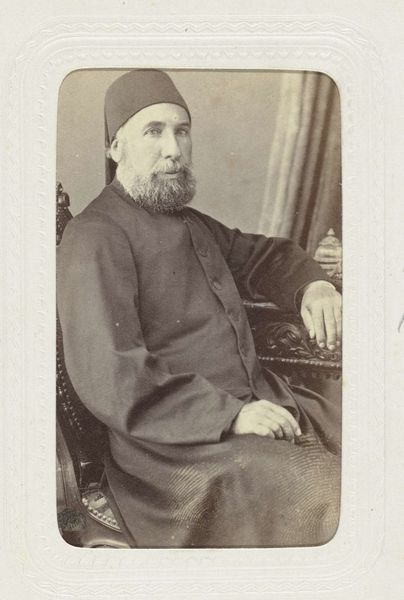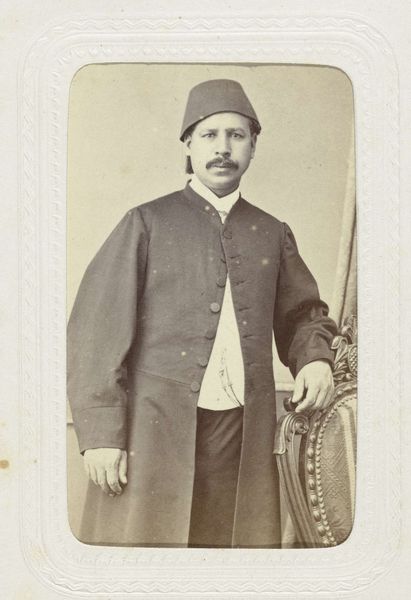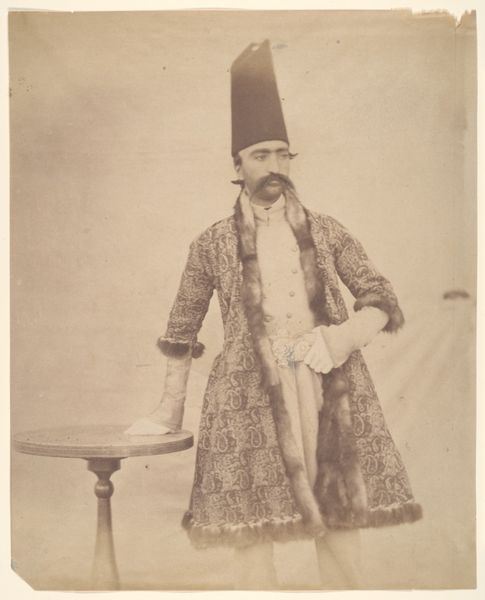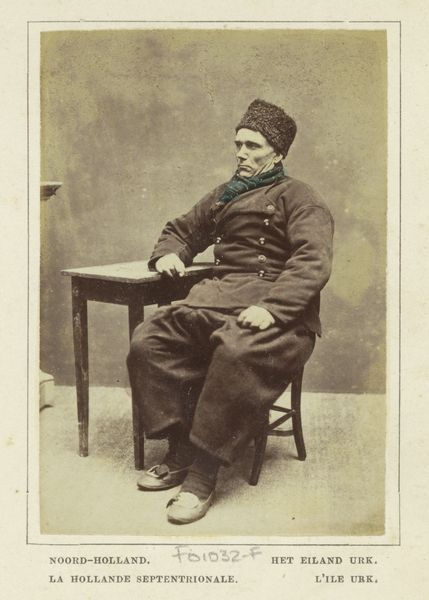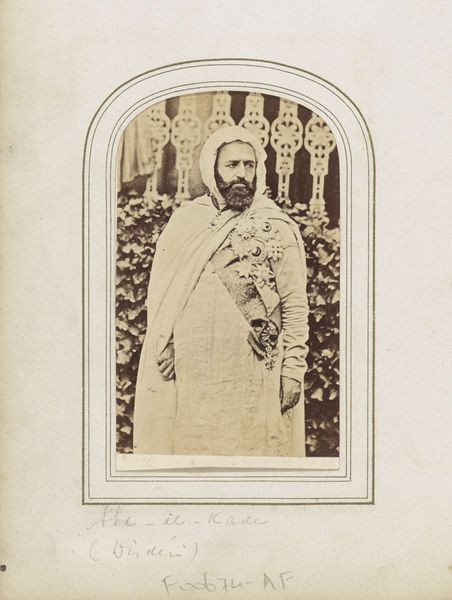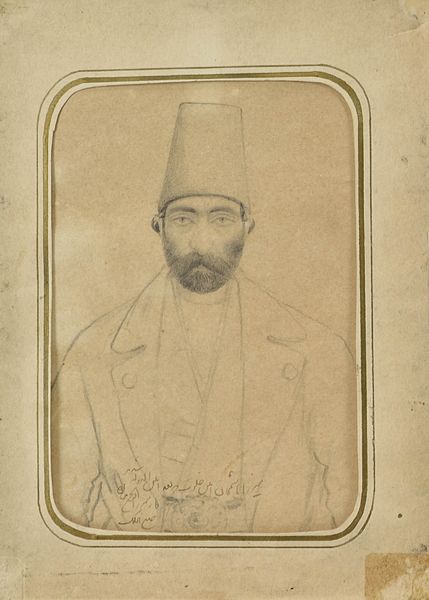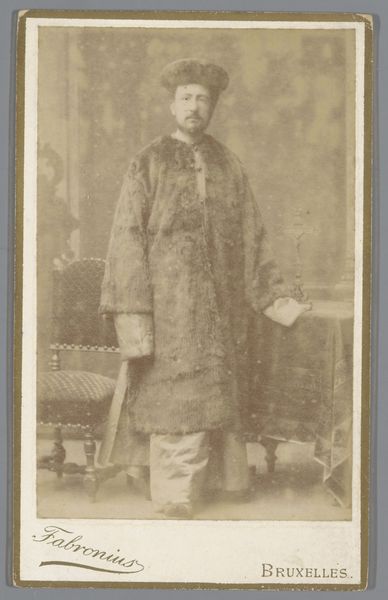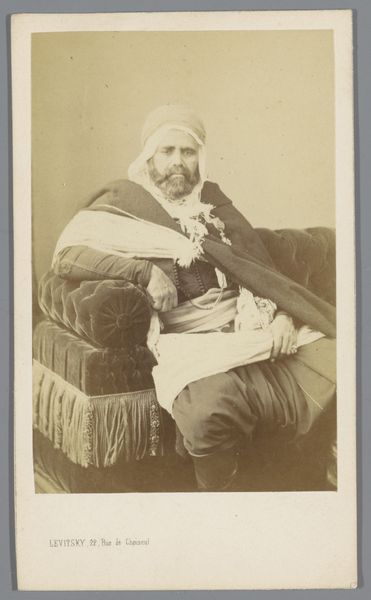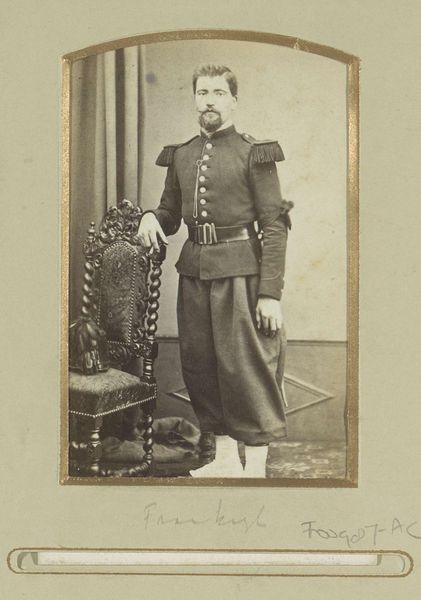
Studioportret van een man in lange jas met op zijn hoofd een fez c. 1863 - 1866
0:00
0:00
daguerreotype, photography, albumen-print
#
portrait
#
16_19th-century
#
daguerreotype
#
archive photography
#
photography
#
historical photography
#
orientalism
#
19th century
#
albumen-print
Dimensions: height 80 mm, width 54 mm, height 296 mm, width 225 mm
Copyright: Rijks Museum: Open Domain
Curator: I’m immediately drawn into the gravity and formality of this 19th-century portrait. The sepia tones lend it such a weight of history. Editor: It does feel… staged, doesn't it? The pose is so deliberate. He’s like a slightly bored professor waiting for class to begin. There’s a melancholy clinging to the image, don’t you think? Curator: It could be melancholy, or perhaps just the general atmosphere of 19th-century portraiture! This piece, titled "Studioportret van een man in lange jas met op zijn hoofd een fez", comes to us from the studio of Abdullah Frères, sometime between 1863 and 1866. Note the fez, the long coat, and the books at his side; they are all cultural symbols. The photograph speaks volumes about status, power, and cultural identity during that era. Editor: Definitely. The fez alone is shouting ‘Ottoman Empire’! And holding the glasses rather than wearing them is quite the power move, right? Like, “Yes, I need these, but I'm choosing not to use them at this moment." The staging of orientalism within portraiture is striking. He doesn't look organically placed in the picture but propped as the model he certainly is, right? Curator: Precisely. The Brothers Abdullah were masters of carefully constructing these visual narratives, reflecting European fascination with and perceptions of the East. There’s an element of performance, but also of preservation. Photography offered a new way to document and essentialize cultural types. Editor: I can see that. Knowing the history shifts my perspective a little. What initially felt like a simple, slightly stuffy portrait suddenly opens up into a broader commentary on cultural exchange and representation. So it has the historical frame plus an active agent in the representation. I was maybe too quick to find an inherent melancholy that belongs to the Western Gaze about a generic idea of East. It is my modern Western bias maybe. Curator: It’s a common assumption! This piece reminds us to constantly question our own perspectives when looking at historical imagery. There is no such thing as neutral observing. Editor: Right, images, and especially staged images, like mirrors... We expect some reality and find ourselves reflected back. Curator: Beautifully said. And with that thought, perhaps it's time for our listeners to find their own reflections in the art around them.
Comments
No comments
Be the first to comment and join the conversation on the ultimate creative platform.
